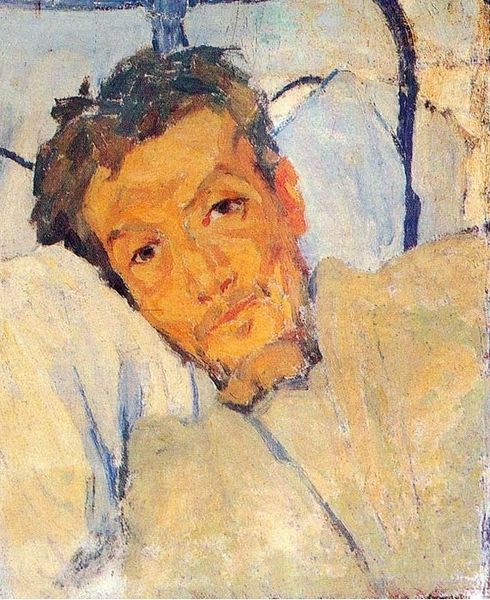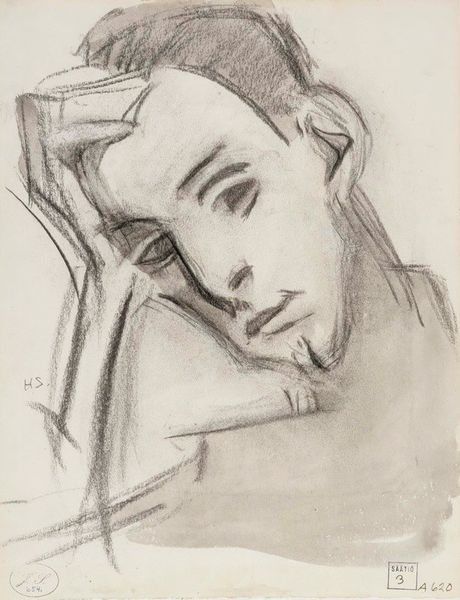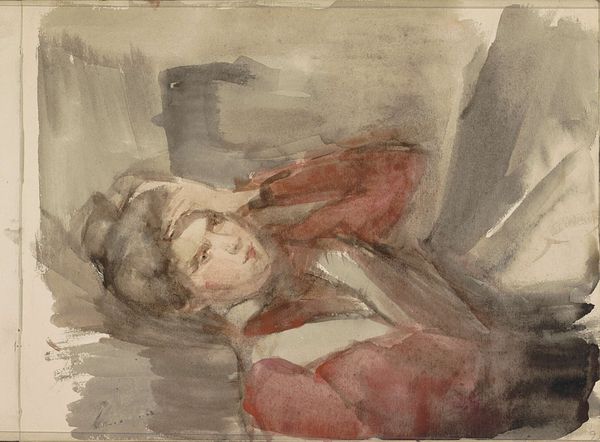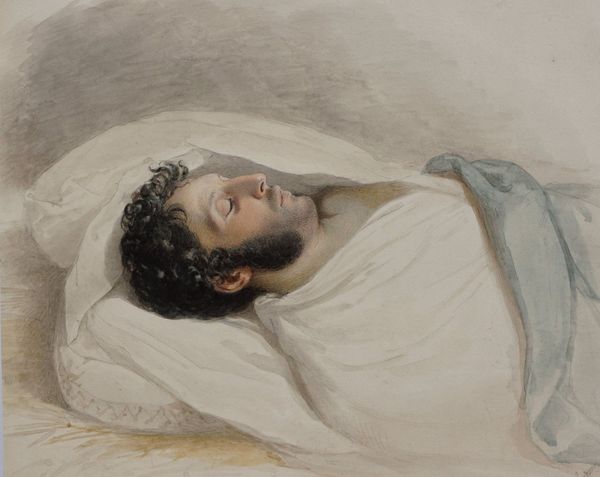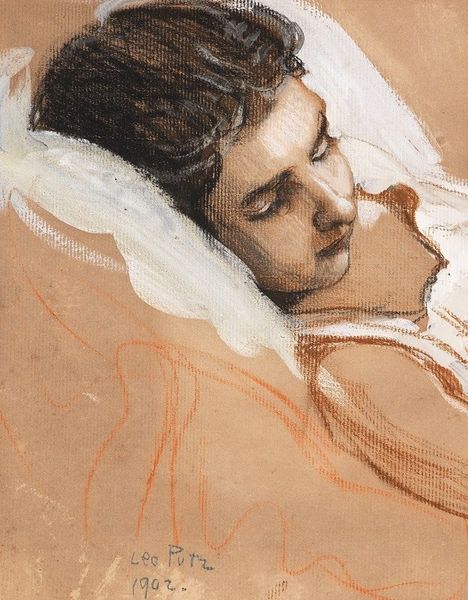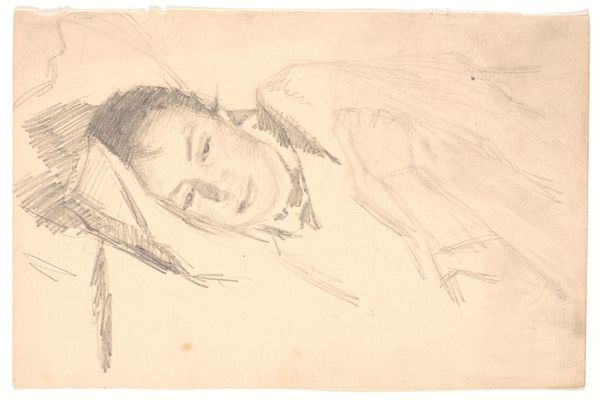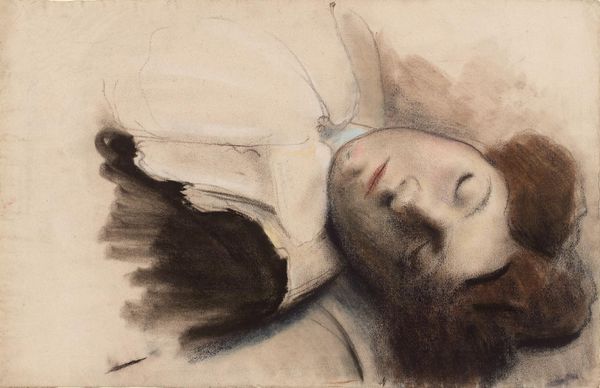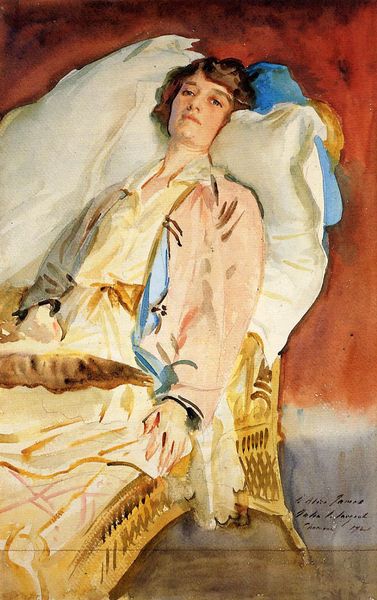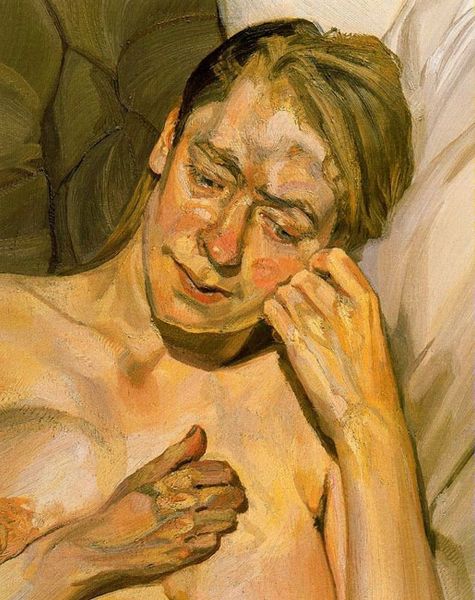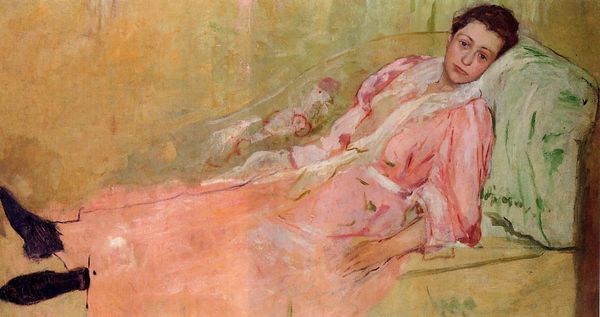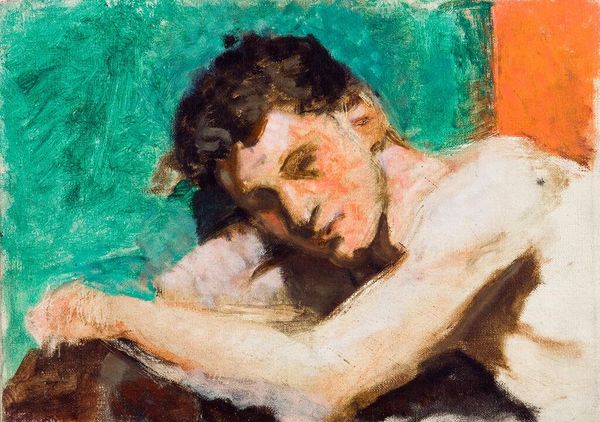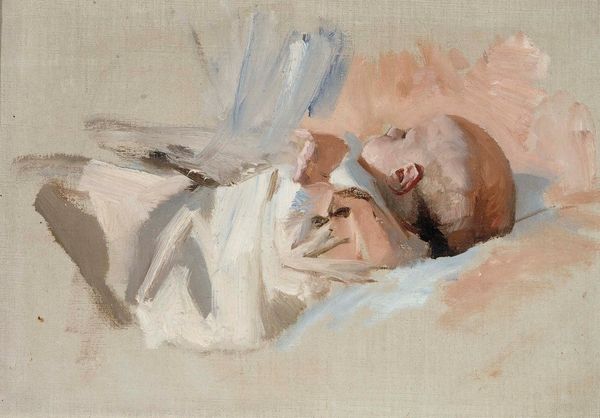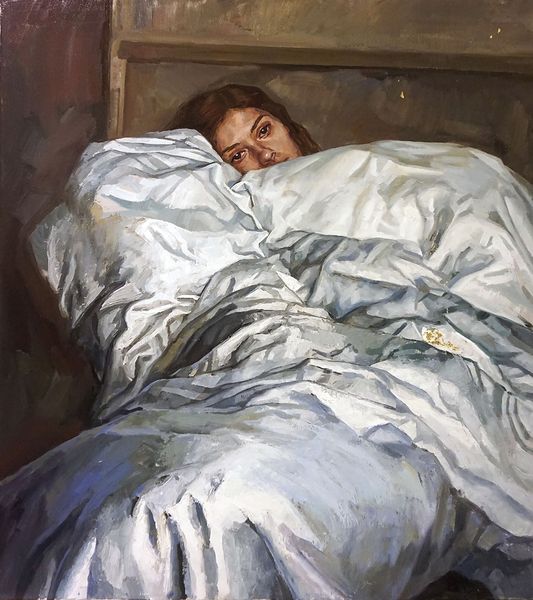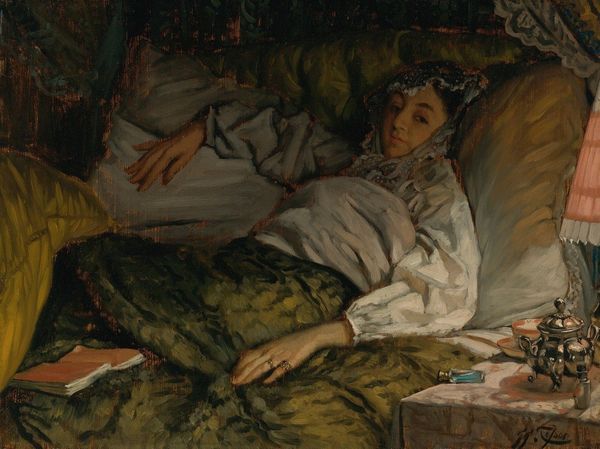
painting
#
portrait
#
facial expression drawing
#
head
#
face
#
painting
#
portrait reference
#
male-portraits
#
portrait head and shoulder
#
expressionism
#
human
#
animal drawing portrait
#
portrait drawing
#
facial study
#
facial portrait
#
portrait art
#
fine art portrait
#
realism
#
digital portrait
Copyright: Public domain US
Editor: So here we have Zinaida Serebriakova's "Portrait of R. Ernst," from 1922, seemingly an oil painting. The sitter looks quite ill or perhaps just deeply weary. What significance do you find in how the artist portrayed this man? Curator: The symbolic weight here lies heavily on the idea of vulnerability. Consider the gaze – direct, but also somehow averted, creating tension. What does that communicate to you? Think about the social and political landscape of Russia at the time. Editor: It feels exposed. He looks both resigned and a little defiant. Given the period, was there perhaps a specific significance to portraying someone this way? Curator: Precisely. The unraveling of societal norms following the revolution meant previous hierarchies of power were destabilized. Serebriakova, in portraying Ernst this way, could be interpreted as leveling him, presenting raw humanity devoid of previous status. The open collar, the way the face emerges from the pillow... What visual cues tell you the story? Editor: I see it now. The blurring of lines – between vulnerability and defiance, sickness and introspection. It suggests a man stripped bare, almost. Curator: Exactly. These subtle visual metaphors allow Serebriakova to reflect broader social themes of vulnerability and the individual, which linger long after the specific historical context fades. Something to remember when we view images, always: it’s not *just* the subject, but how that subject is positioned within the grand narrative. Editor: Thank you. This perspective has reshaped how I look at portraits now!
Comments
No comments
Be the first to comment and join the conversation on the ultimate creative platform.
